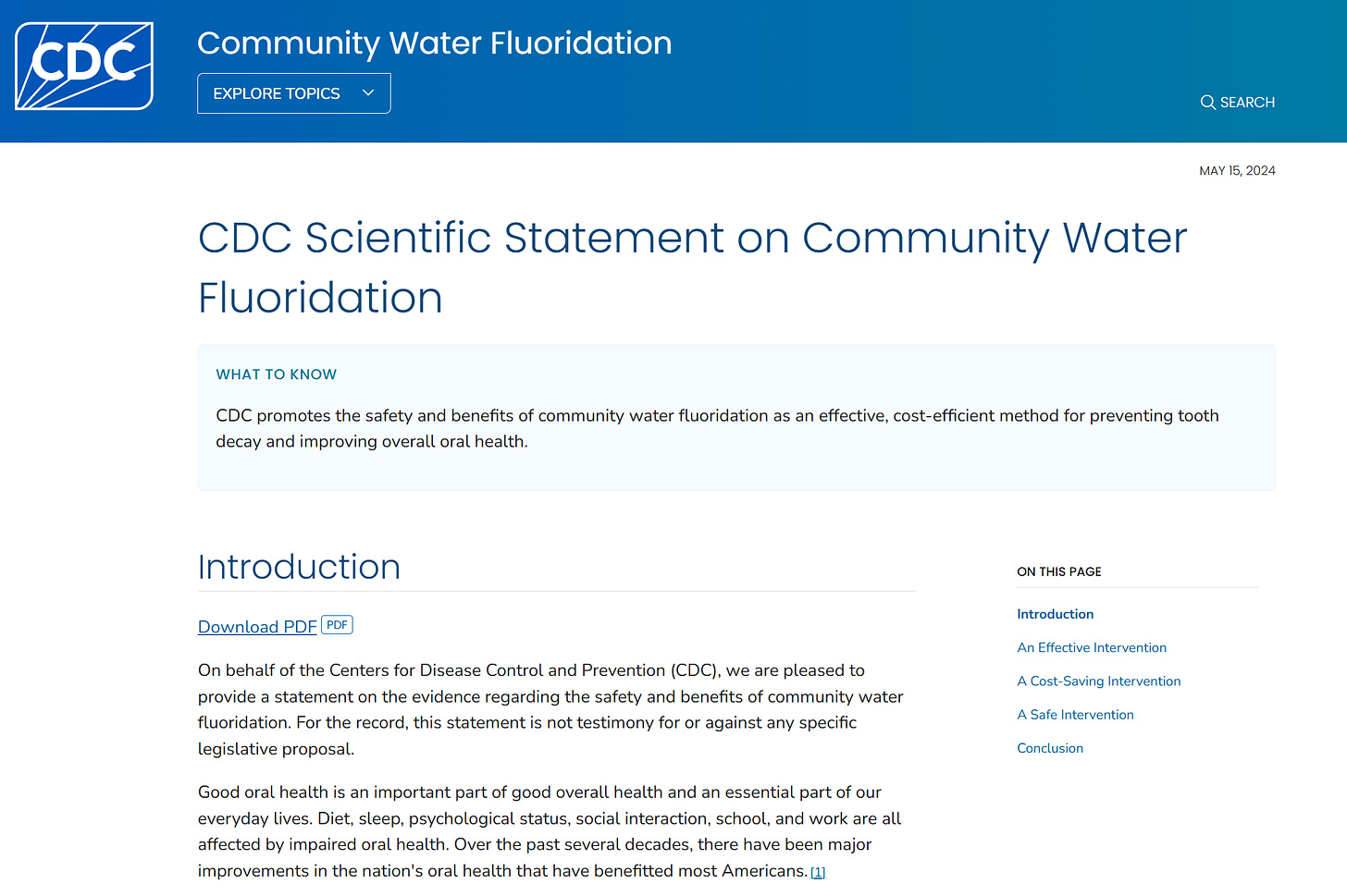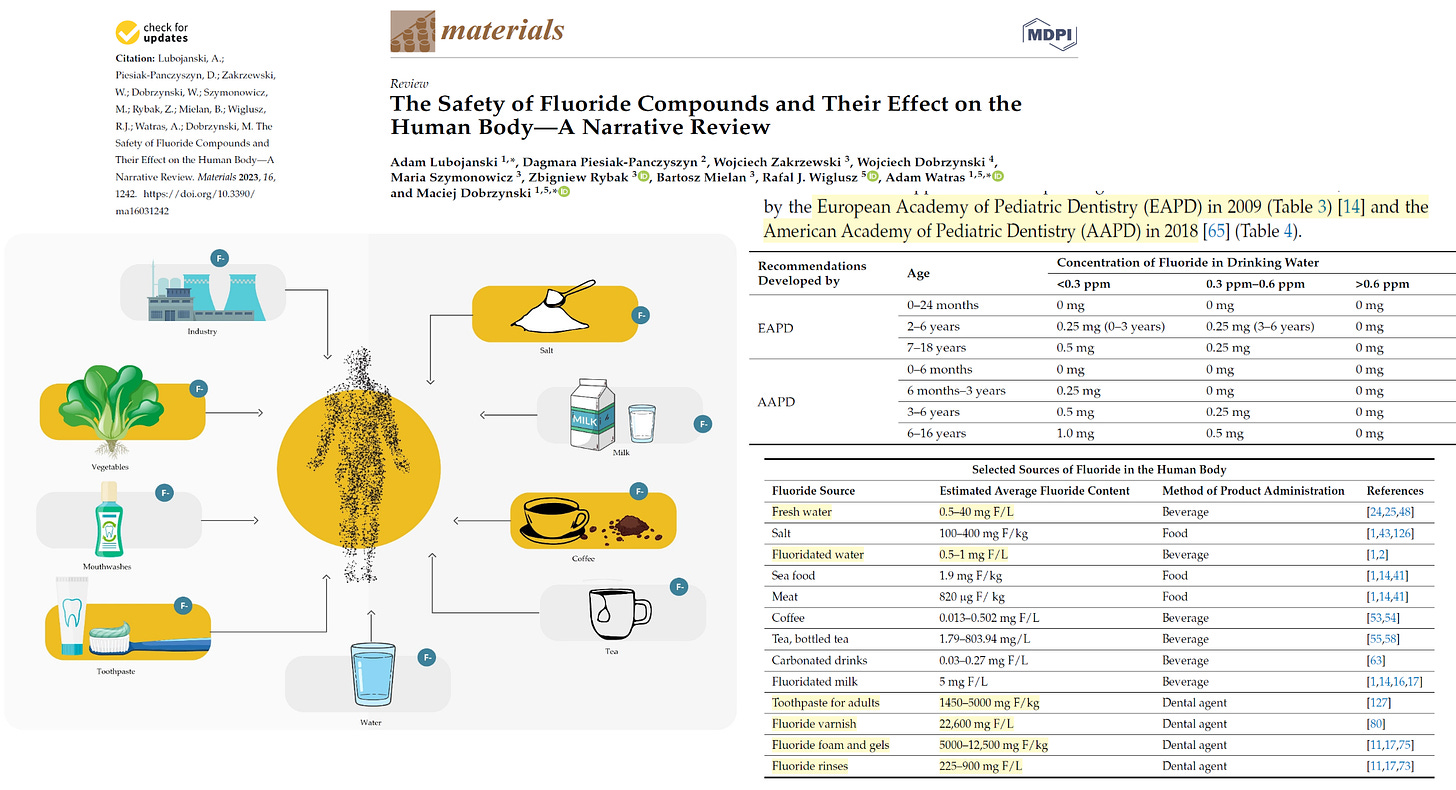US Government Investigation and Scientific Statements Concerning Community Water Fluoridation
MAHA Should Slow Down, Frame the Issue, Convene Stakeholders, Build Consensus, then Come to Sound Public Health Policy Decisions
By Peter A. McCullough, MD, MPH
Water treatment with fluoride began in 1945 in Grand Rapids, Michigan. Today about 72% of Americans drink public tap water that is supplemented with fluoride and enjoy ~25% reduction in dental caries.
Water fluoridation is beneficial for reducing and controlling tooth decay and promoting oral health across the lifespan. Evidence shows that water fluoridation prevents tooth decay by providing frequent and consistent contact with low levels of fluoride, ultimately reducing tooth decay by about 25% in children and adults.56789 Additional evidence shows that schoolchildren living in communities where water is fluoridated have, on average, 2.25 fewer decayed teeth compared to similar children not living in fluoridated communities.10
The safety and benefits of fluoride are well documented and have been reviewed comprehensively by several scientific and public health organizations. The U.S. Public Health Service; the United Kingdom's National Institute for Health Research, Centre for Reviews and Dissemination, at the University of York; and the National Health and Medical Research Council, Australia have all conducted scientific reviews by expert panels and concluded that community water fluoridation is a safe and effective way to promote good oral health and prevent decay.111213 The U.S. Community Preventive Services Task Force, on the basis of systematic reviews of scientific literature, issued a strong recommendation in 2001 and again in 2013, for community water fluoridation for the prevention and control of tooth decay.1014
Keep reading with a 7-day free trial
Subscribe to Courageous Discourse™ with Dr. Peter McCullough & John Leake to keep reading this post and get 7 days of free access to the full post archives.






